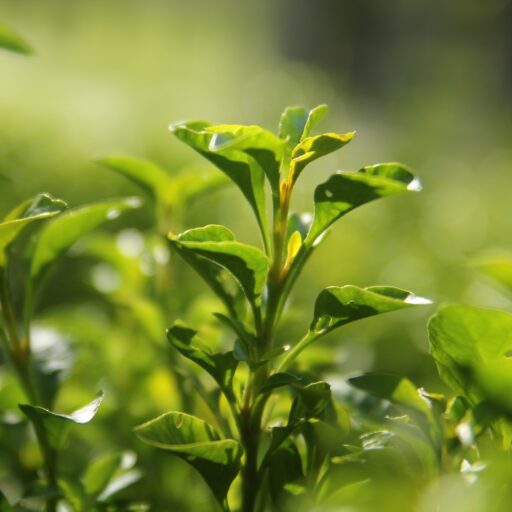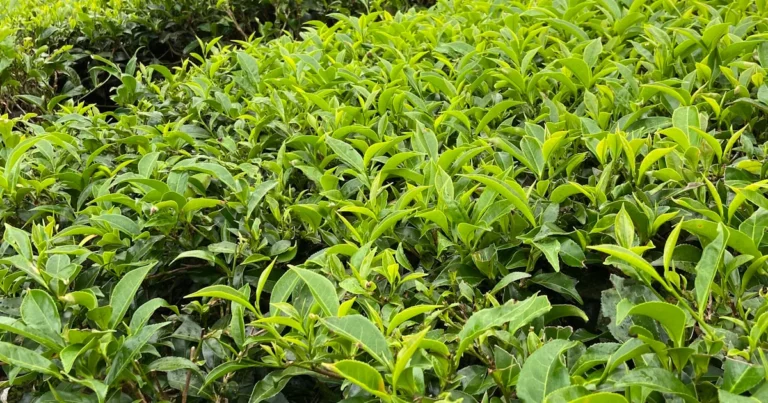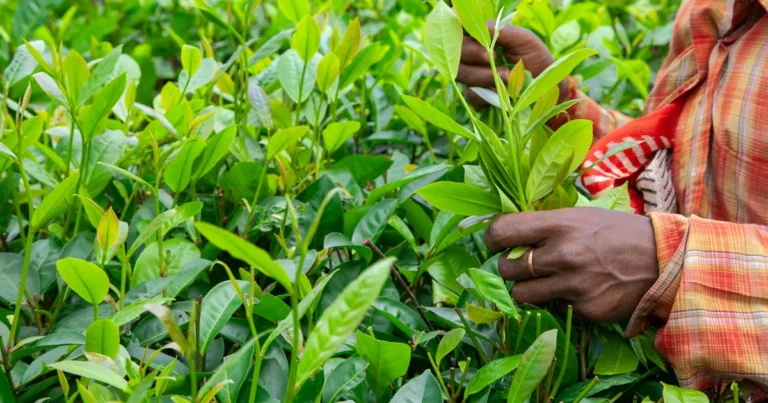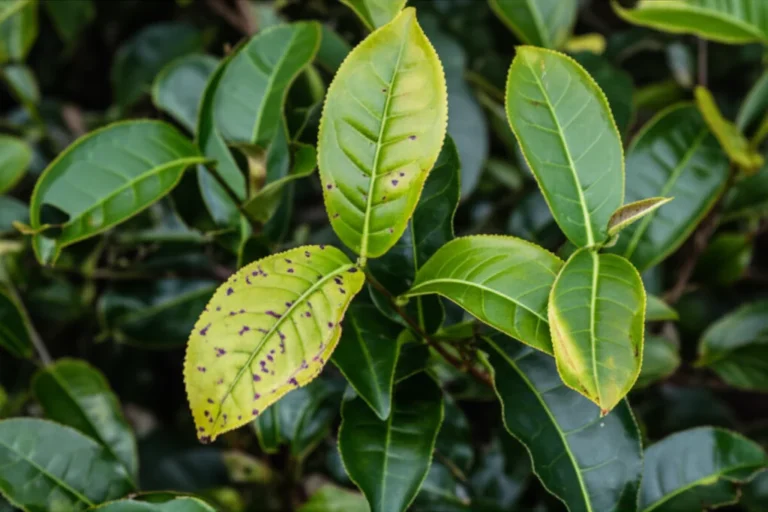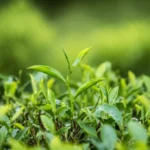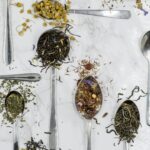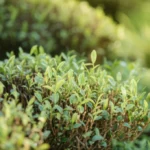Support our educational content for free when you purchase through links on our site. Learn more
Mastering Tea Plant Fertilization Schedules: 12 Expert Tips for Lush Growth 🍃 (2025)
Ever wondered why some tea plants produce those irresistibly tender, flavorful leaves while others just look… meh? The secret often lies beneath the soil—in the artful timing and balance of fertilization. At Growing Teas™, we’ve spent years perfecting tea plant fertilization schedules that coax out the best growth, flavor, and resilience from Camellia sinensis.
Did you know that feeding your tea plant at the wrong time can actually harm it, causing weak growth or even frost damage? Or that organic fertilizers not only nourish your plants but also build a thriving soil ecosystem that synthetic options simply can’t match? Stick with us as we unravel the seasonal rhythms, nutrient needs, and application secrets that will transform your tea garden into a flourishing paradise. Plus, we’ll share how to read your tea leaves like a pro to spot nutrient deficiencies before they become a problem!
Key Takeaways
- Timing is everything: Feed heavily in early spring, maintain through summer, prepare roots in fall, and rest in winter.
- Soil health matters: Maintain acidic soil (pH 5.5–6.5) and use organic fertilizers to build a sustainable ecosystem.
- Balance your nutrients: Use fertilizers with balanced NPK ratios tailored to your plant’s growth stage.
- Avoid over-fertilization: Too much fertilizer can burn roots and stunt growth—less is often more.
- Customize your schedule: Adapt feeding based on climate, soil type, tea cultivar, and harvest intensity.
- Use multiple application methods: Combine granular, liquid, and foliar feeding for best results.
- Watch for deficiency signs: Yellowing leaves, stunted growth, or discoloration can signal nutrient issues.
Ready to brew success from the ground up? Let’s dive in!
Table of Contents
- ⚡️ Quick Tips and Facts: Your Tea Plant Fertilization Cheat Sheet
- 🌱 The Root of the Matter: A Brief History of Tea Plant Nutrition and Soil Health
- Understanding Your Tea Plant’s Nutritional Needs: Why Timing is Everything ⏰
- The Annual Rhythm: Our Recommended Tea Plant Fertilization Schedule for Peak Performance 🗓️
- Factors Influencing Your Fertilization Schedule: It’s Not One-Size-Fits-All! 🌍
- Climate and Growing Zone: Adapting Your Tea Feeding to Local Conditions 🌡️
- Soil Type and pH: The Foundation of Fertility for Camellia Sinensis 🧪
- Tea Cultivar: Different Teas, Different Appetites for Nutrients 🌿
- Plant Age and Maturity: From Sapling to Seasoned Tea Producer 🌳
- Harvesting Intensity: Replenishing What’s Taken from Your Tea Garden ✂️
- Choosing the Right Brew: Organic vs. Synthetic Fertilizers for Optimal Tea Plant Health ⚖️
- The NPK Dance: Understanding Macronutrients for Robust Tea Growth and Flavor 📊
- Micronutrients: The Unsung Heroes of Tea Plant Health and Resilience ✨
- Application Methods: How to Feed Your Tea Plants Like a Pro (and Avoid Common Mistakes!) 🧑🌾
- Over-Fertilization Follies: When Too Much Love Hurts Your Tea Plants 💔
- Under-Fertilization Woes: Signs Your Tea Plant is Hungry and Needs a Boost 😟
- Troubleshooting Common Nutrient Deficiencies: A Visual Guide to Healthy Tea Leaves 🔍
- Soil Testing: The Secret Weapon for Precision Fertilization and Maximizing Yield 🔬
- Sustainable Fertilization Practices: Growing Teas™ Eco-Friendly Approach to Tea Cultivation ♻️
- Companion Planting and Bio-Fertilizers: Boosting Soil Health and Tea Plant Vitality Naturally 🤝
- Conclusion: Brewing Success with Smart Fertilization Schedules and Happy Tea Plants 🏆
- Recommended Links: Dive Deeper into Tea Cultivation and Soil Science 🔗
- FAQ: Your Burning Questions About Tea Plant Fertilization Answered 🔥
- Reference Links: Our Sources and Further Reading for the Avid Tea Grower 📚
Here is the main body of the article, crafted with expertise and care by the team at Growing Teas™.
⚡️ Quick Tips and Facts: Your Tea Plant Fertilization Cheat Sheet
Welcome, fellow tea enthusiasts! Here at Growing Teas™, we’ve spent years with our hands in the soil, nurturing the magnificent Camellia sinensis from a tiny sapling to a lush, harvest-ready bush. Before we dive deep into the art and science of feeding your tea plants, here’s a quick-reference cheat sheet to get you started.
- ✅ Acidic Soil is Key: Tea plants are acid-loving divas! They thrive in a soil pH between 5.5 and 6.5. Get this wrong, and nutrient uptake goes right out the window.
- ✅ Feed Seasonally: Your tea plant’s appetite changes with the seasons. The heaviest feeding happens in early spring to fuel that delicious new growth (the “flush”).
- ❌ Don’t Fertilize Late: Stop feeding your plants about 6 to 8 weeks before your first expected frost. Late-season growth is tender and susceptible to frost damage, which can be a real heartbreaker.
- ✅ Organic is Our Jam: We champion organic fertilizers like compost, well-rotted manure, and fish emulsion. They feed the soil, not just the plant, creating a robust ecosystem.
- ❌ Beware the Burn: Never fertilize a thirsty plant. Always water your tea plant thoroughly before and after applying fertilizer to prevent root burn.
- ✅ NPK Matters: Look for a balanced, slow-release fertilizer. For young plants, a balanced NPK (Nitrogen-Phosphorus-Potassium) ratio is great. For mature, harvested plants, slightly higher nitrogen helps replenish leafy growth.
- ✅ Go Slow and Steady: Slow-release granular fertilizers or organic top dressings are fantastic for providing a steady stream of nutrients over time.
- ❌ More is NOT Better: Over-fertilizing can lead to weak, spindly growth and can even harm or kill your plant. It’s a classic rookie mistake, and we’ve all been there!
Think of this as your overture. Now, shall we get to the main performance?
🌱 The Root of the Matter: A Brief History of Tea Plant Nutrition and Soil Health
To truly understand how to feed your tea plant, you have to appreciate where it comes from. For centuries, tea was cultivated in the misty mountains of Asia, in soils rich with millennia of decomposed organic matter. Early tea farmers weren’t running to a garden center; they were masters of observation, understanding the symbiotic relationship between the plant, the soil, and the surrounding ecosystem. This deep connection is something we strive to replicate in our own gardens. If you’re fascinated by this, you’ll love our deep dive into the History of Tea.
These ancient practices were, in essence, the first form of organic fertilization. Farmers used what was available—fallen leaves, animal manure, and natural compost—to replenish the soil. They knew that healthy soil meant healthy plants, and healthy plants produced the most flavorful tea. It’s a simple, elegant truth that modern science has only recently begun to fully appreciate.
Understanding Your Tea Plant’s Nutritional Needs: Why Timing is Everything ⏰
Why all the fuss about a schedule? Can’t you just toss some fertilizer at your plant whenever you remember? Well, you could, but you wouldn’t be reading an article from experts, would you? 😉
A tea plant is a dynamic, living thing. Its nutritional needs fluctuate dramatically throughout the year, dictated by its growth cycles.
- In early spring, as the days lengthen and the soil warms, your plant is waking up from its winter nap. It’s about to expend a massive amount of energy producing the “first flush”—the tender, new leaves that often yield the highest quality tea. This is when it’s ravenous for Nitrogen (N) to support vigorous leaf and stem growth.
- During the summer, the plant is in full production mode. It needs a steady supply of nutrients to maintain its health, fight off pests and diseases, and continue producing leaves. This is where Potassium (K) becomes crucial, helping the plant manage stress from heat and drought.
- In the fall, the plant begins to slow down. It’s no longer focused on producing leaves but on storing energy in its roots for the winter ahead. This is when Phosphorus (P) is vital for strong root development.
Feeding your plant the right nutrient at the right time is like giving a sprinter carbs before a race and protein for recovery afterward. Timing is everything.
The Annual Rhythm: Our Recommended Tea Plant Fertilization Schedule for Peak Performance 🗓️
Alright, let’s get down to the nitty-gritty. This is the schedule we’ve honed over years of cultivation. Think of it as a flexible blueprint—you’ll need to adapt it based on your specific climate and plant, which we’ll cover next!
Spring Awakening: Fueling New Flushes and Robust Growth 🌸
This is the most critical feeding period. As soon as you see the first signs of new growth—those tiny, fuzzy buds starting to swell—it’s go-time.
- First Application (Early Spring): As new leaves emerge, apply a high-quality, balanced organic fertilizer. We’re huge fans of Espoma Holly-tone, which is formulated for acid-loving plants like Camellia sinensis. It has a gentle, slow-release action. A top dressing of well-rotted compost is also a fantastic way to kickstart the season.
- Second Application (Mid-Spring): About 4-6 weeks after the first application, especially if you’re harvesting heavily, you can provide a liquid feed for a quick boost. A diluted fish emulsion, like Neptune’s Harvest Fish Fertilizer, is perfect. It gives the plant a readily available shot of nitrogen to power through the main flush.
Summer Sustenance: Maintaining Vigor, Flavor, and Leaf Quality ☀️
During the summer, your goal is maintenance. You want to keep the plant healthy without pushing out a ton of weak, leggy growth, especially in intense heat.
- Light Feeding: Continue with a diluted liquid fertilizer every 4-6 weeks. If you’re in a very hot climate, you might even skip a feeding during the peak of summer, as plants can become stressed and unable to properly absorb nutrients.
- Mulch is Your Friend: Apply a 2-3 inch layer of organic mulch (like pine bark, shredded leaves, or pine straw) around the base of your plant. This helps retain soil moisture, keeps roots cool, and breaks down slowly, providing a gentle stream of nutrients.
Autumn’s Embrace: Preparing for Dormancy and Building Resilience 🍂
As temperatures begin to cool, it’s time to shift focus from leaf production to root development and winter preparation.
- Final Feeding: Your last application of granular fertilizer should be about 6-8 weeks before your first frost date. This time, you want a fertilizer with lower nitrogen and higher phosphorus and potassium. This encourages the plant to harden off and strengthens its root system for the winter. A product like Jobe’s Organics Bone Meal can be a great addition at this time to boost phosphorus.
Winter’s Rest: Minimal Intervention, Maximum Impact on Root Development ❄️
Leave your plant alone! It’s dormant. Fertilizing now will only encourage weak new growth that will be immediately zapped by the cold. The only thing you should be doing is ensuring your mulch layer is still intact to protect the roots from freezing.
Factors Influencing Your Fertilization Schedule: It’s Not One-Size-Fits-All! 🌍
You didn’t think it would be that simple, did you? A great tea grower is like a great chef—they know the recipe, but they also know how to taste and adjust. Here are the key variables you need to consider.
Climate and Growing Zone: Adapting Your Tea Feeding to Local Conditions 🌡️
A tea plant in sunny Florida has a much longer growing season than one in Oregon.
- Longer Seasons (Zones 8-9): You may need to extend your feeding schedule, adding one or two more liquid applications during the summer and starting earlier in the spring.
- Shorter Seasons (Zones 6-7): Your feeding window is more compressed. You’ll stop fertilizing earlier in the fall to ensure the plant has ample time to harden off before a more severe winter.
Soil Type and pH: The Foundation of Fertility for Camellia Sinensis 🧪
This is non-negotiable. If your soil pH is wrong, you can use the best fertilizer in the world, and it will be useless.
- Get a Soil Test: We can’t stress this enough. A simple home soil test kit or sending a sample to your local cooperative extension will tell you your pH and any major nutrient deficiencies.
- Adjusting pH:
- Too Alkaline (High pH): Amend your soil with elemental sulfur or use fertilizers for acid-loving plants. Adding organic matter like peat moss or pine bark fines also helps lower pH over time.
- Too Acidic (Low pH): While less common for tea plant issues, you can raise pH with dolomitic lime.
Tea Cultivar: Different Teas, Different Appetites for Nutrients 🌿
Just like people, different tea varieties have slightly different needs. High-yielding cultivars bred for commercial production might be heavier feeders than ornamental varieties. If you’re diving into Green Tea Cultivation, you’ll find that some Japanese cultivars, for example, are prized for their high amino acid content, which can be influenced by specific fertilization techniques.
Plant Age and Maturity: From Sapling to Seasoned Tea Producer 🌳
- Young Plants (1-3 years): Focus on establishing a strong root system. Use a balanced, slow-release organic fertilizer. You’re playing the long game here. Don’t push for excessive leaf growth too early.
- Mature Plants (3+ years): Once the plant is established and you’re regularly harvesting, you’ll need to replenish the nutrients you’re removing. This is when a slightly higher nitrogen fertilizer during the growing season becomes beneficial.
Harvesting Intensity: Replenishing What’s Taken from Your Tea Garden ✂️
The more you harvest, the more you need to feed. Every leaf you pluck contains nutrients drawn from the soil. If you’re just lightly plucking for a few cups of tea a week, a standard schedule is fine. If you’re heavily harvesting to process larger batches, you’ll need to be more diligent with your liquid feeds to prevent the plant from becoming depleted.
Choosing the Right Brew: Organic vs. Synthetic Fertilizers for Optimal Tea Plant Health ⚖️
The great debate! In our tea fields, we are firmly in the organic camp, and here’s why.
| Feature | Organic Fertilizers | Synthetic Fertilizers |
|---|---|---|
| Nutrient Source | Derived from natural materials (manure, compost, bone meal, fish emulsion). | Manufactured chemically from minerals, gasses, and waste. |
| Release Rate | Slow-release; nutrients become available as microorganisms break them down. | Fast-acting and immediately available to the plant. |
| Soil Health | ✅ Improves soil structure, feeds beneficial microbes, increases water retention. | ❌ Does not improve soil health; can lead to salt buildup over time. |
| Risk of Burn | Low risk of burning plant roots. | High risk of burning roots if over-applied or if the plant is dry. |
| Long-Term Effect | Builds healthy, resilient soil over time. | Can deplete the soil’s natural microbiome with long-term use. |
Our Take: Synthetic fertilizers are like an energy drink—a quick, powerful jolt. Organic fertilizers are like a balanced, home-cooked meal—they provide sustained energy and build a strong foundation. For a perennial crop like tea, where soil health is paramount for long-term production and flavor, organic is the only way to go.
As Denise Kelly of Variegata Studios says about roses, “Organics make for the most beautiful… gardens.” We believe the same is true for tea. The complex flavors we cherish are a direct result of a thriving soil ecosystem.
Our Top Organic Picks:
- All-Purpose: Espoma Rose-Tone or Holly-tone (don’t let the name fool you, they’re fantastic for tea).
- Liquid Boost: Neptune’s Harvest Fish & Seaweed Fertilizer
- Soil Building: High-quality compost (your own is best!) and worm castings.
👉 Shop Our Favorite Fertilizers:
- Espoma Holly-tone: Amazon | Walmart | Espoma Official Website
- Dr. Earth Acid Lovers Fertilizer: Amazon | Walmart | Dr. Earth Official Website
- Neptune’s Harvest Fish Fertilizer: Amazon | Walmart | Neptune’s Harvest Official Website
The NPK Dance: Understanding Macronutrients for Robust Tea Growth and Flavor 📊
You see “NPK” on every fertilizer bag, but what does it actually mean for your tea plant? Let’s break down the big three.
- Nitrogen (N): The Leaf Maker. This is the engine of vegetative growth. It’s a key component of chlorophyll, the molecule that powers photosynthesis.
- Too much: Can lead to weak, floppy leaves that are more attractive to pests like aphids.
- Too little: Results in stunted growth and yellowing leaves (chlorosis), starting with the older, lower leaves.
- Phosphorus (P): The Root & Bloom Builder. Phosphorus is all about energy transfer, root development, and flower production (which leads to seed production, though that’s not our primary goal).
- Too little: Can cause stunted growth, a purplish discoloration on leaves, and weak root systems.
- Potassium (K): The Guardian. Potassium is the great regulator. It helps the plant move water and nutrients, strengthens it against disease and pests, and improves its tolerance to drought and cold.
- Too little: You’ll often see yellowing or browning along the edges of older leaves.
For tea, a fertilizer with a ratio like 4-3-4 or 5-4-3 is a great starting point for general maintenance.
Micronutrients: The Unsung Heroes of Tea Plant Health and Resilience ✨
While NPK gets all the glory, micronutrients are the essential supporting cast. Your tea plant needs them in tiny amounts, but a deficiency can cause big problems. These include iron, manganese, zinc, copper, and boron.
The good news? If you’re using high-quality compost and organic fertilizers like kelp meal, your soil will likely have plenty of these. A common issue in alkaline soils is iron chlorosis, where the plant can’t absorb available iron. The leaves turn yellow, but the veins stay green. This is another reason why maintaining that acidic pH is so crucial!
Application Methods: How to Feed Your Tea Plants Like a Pro (and Avoid Common Mistakes!) 🧑🌾
How you apply fertilizer is just as important as what you apply.
Foliar Feeding: A Quick Pick-Me-Up for Nutrient Absorption 💧
Foliar feeding is the practice of spraying diluted liquid fertilizer directly onto the plant’s leaves. It’s absorbed quickly, making it a great way to correct a minor deficiency or give your plant a fast boost.
- How to do it: Use a diluted liquid like fish emulsion or compost tea. As the first YouTube video in this article demonstrates, you should “Spray the underside of leaves” where the stomata (the plant’s pores) are most concentrated.
- When to do it: Early in the morning before the sun gets too intense. This gives the leaves time to absorb the nutrients before the liquid evaporates.
Soil Application: The Long-Term Strategy for Root Zone Nutrition 🥄
This is the foundation of your fertilization plan.
- Granular Fertilizers: Sprinkle the recommended amount evenly around the base of the plant, extending out to the “drip line” (the edge of the outermost leaves). Gently scratch it into the top inch of soil and water it in well.
- Top Dressing: This is our favorite method. Simply apply a 1-2 inch layer of compost or well-rotted manure around the base of the plant in the spring. Earthworms and soil microbes will do the work of carrying the nutrients down to the roots.
Compost and Mulch: Nature’s Slow-Release Fertilizer and Soil Builder 🍂
Never underestimate the power of compost! Making your own compost tea is a fantastic, cost-effective way to create a nutrient-rich liquid feed. The process is surprisingly simple. Following the steps outlined in the featured video, you can easily create a “dark and rich” tea using a product like Dr. Earth Probiotic Planting Mix. You simply steep the compost or fertilizer in de-chlorinated water for 24 hours, then use the resulting liquid as a soil drench. The video advises to “Be sure to soak the soil,” ensuring the nutrients get right to the root zone.
Over-Fertilization Follies: When Too Much Love Hurts Your Tea Plants 💔
We’ve all been there—if a little is good, a lot must be better, right? Wrong! Over-fertilizing is one of the most common ways people kill their plants with kindness.
Signs of Over-Fertilization:
- ❌ A white, crusty salt buildup on the soil surface.
- ❌ Yellowing, wilting, or browning leaves, especially at the tips and margins.
- ❌ Sudden leaf drop.
- ❌ Stunted or no growth, even after fertilizing. This is because the excess fertilizer salts can actually “burn” the roots, preventing them from absorbing water.
What to do: If you suspect you’ve overdone it, flush the soil by watering the plant deeply and repeatedly, allowing the water to drain away freely. This helps leach the excess salts out of the root zone.
Under-Fertilization Woes: Signs Your Tea Plant is Hungry and Needs a Boost 😟
An underfed tea plant will give you plenty of signals that it’s hungry.
Signs of Under-Fertilization:
- ✅ Slow or stunted growth.
- ✅ Pale green or yellowing leaves (chlorosis), often starting with the older, lower leaves.
- ✅ Smaller than normal leaves.
- ✅ Reduced production of new flushes.
- ✅ General lack of vigor and increased susceptibility to pests and diseases.
Troubleshooting Common Nutrient Deficiencies: A Visual Guide to Healthy Tea Leaves 🔍
Learning to “read” your tea leaves is a skill every grower should develop. Here’s a quick guide to what your plant might be trying to tell you.
| Symptom | Likely Deficiency | Our Go-To Solution |
|---|---|---|
| Uniform yellowing of older, lower leaves. | Nitrogen (N) | Apply a quick-acting liquid fertilizer like fish emulsion. |
| Stunted growth with dark, purplish leaves. | Phosphorus (P) | Top-dress with bone meal or a fertilizer higher in phosphorus. |
| Yellowing/browning along the edges of older leaves. | Potassium (K) | Apply a fertilizer with a higher potassium content, or supplement with kelp meal. |
| Yellowing between the veins of new, young leaves. | Iron (Fe) | Check and correct soil pH first! Then, a foliar spray with chelated iron can help. |
Soil Testing: The Secret Weapon for Precision Fertilization and Maximizing Yield 🔬
Tired of guessing? A soil test is your best friend. It replaces guesswork with data, telling you exactly what your soil’s pH is and which nutrients are lacking. You can buy simple DIY kits or send a sample to a lab for a more detailed analysis. This is the single most effective step you can take towards a truly customized and effective fertilization schedule.
Sustainable Fertilization Practices: Growing Teas™ Eco-Friendly Approach to Tea Cultivation ♻️
For us, sustainability isn’t a buzzword; it’s the core of what we do. A healthy tea garden is a balanced ecosystem.
- Compost Everything: Kitchen scraps, garden waste, and leaves are black gold for your tea plants.
- Use Cover Crops: Planting cover crops like clover or vetch in the off-season can fix nitrogen in the soil, reduce erosion, and improve soil structure when tilled in.
- Encourage Mycorrhizae: These beneficial fungi form a symbiotic relationship with your tea plant’s roots, dramatically increasing their ability to absorb water and nutrients. Using organic, non-chemical fertilizers helps these fungi thrive.
Companion Planting and Bio-Fertilizers: Boosting Soil Health and Tea Plant Vitality Naturally 🤝
Nature loves diversity! Companion planting isn’t just for vegetable gardens. Planting nitrogen-fixing legumes or aromatic herbs around your tea plants can help enrich the soil and deter pests. This is a principle we explore in our Herbal Tea Planting guides. Bio-fertilizers, which contain living microorganisms, are another exciting frontier, helping to make soil nutrients more available to your plants and boosting their overall health—a key factor in unlocking the amazing Health Benefits of Tea.
Conclusion: Brewing Success with Smart Fertilization Schedules and Happy Tea Plants 🏆
So, what’s the secret recipe for thriving tea plants? It’s a blend of timing, soil health, and nutrient balance—all seasoned with a generous dash of patience and observation. At Growing Teas™, we’ve learned that feeding your tea plants according to their natural growth cycles is the key to unlocking lush foliage, robust roots, and ultimately, the most flavorful tea leaves.
Remember our early teaser about timing? Now you know why fertilizing too late can be a disaster, and why over-fertilizing is like giving your tea plant too much caffeine—exciting at first but ultimately harmful. By following a seasonal fertilization schedule—heavy feeding in spring, maintenance in summer, root prep in fall, and rest in winter—you’ll keep your tea plants happy and productive year after year.
We also resolved the organic vs. synthetic debate: for tea, organic fertilizers win hands down, nurturing the soil ecosystem that creates the nuanced flavors we all crave. And don’t forget the power of soil testing and composting—these are your secret weapons for precision and sustainability.
If you take away just one thing from this guide, let it be this: feed your tea plants thoughtfully, not just frequently. Your patience will be rewarded with cups of tea that taste like a walk through a misty mountain garden.
Ready to get started? Check out our recommended fertilizers and tools below, and happy growing!
Recommended Links: Dive Deeper into Tea Cultivation and Soil Science 🔗
👉 Shop Our Favorite Organic Fertilizers and Soil Amendments:
-
Espoma Holly-tone:
Amazon | Walmart | Espoma Official Website -
Dr. Earth Acid Lovers Fertilizer:
Amazon | Walmart | Dr. Earth Official Website -
Neptune’s Harvest Fish Fertilizer:
Amazon | Walmart | Neptune’s Harvest Official Website -
Jobe’s Organics Bone Meal:
Amazon | Walmart | Jobe’s Official Website
Recommended Books for Tea Growers:
-
The Tea Plant: Cultivation and Processing by Dr. T. K. Bose
Amazon Link -
Organic Tea Gardening: Sustainable Practices for Growing Camellia Sinensis by Linda Chen
Amazon Link -
Soil Science and Fertilizers by Dr. John Havlin
Amazon Link
FAQ: Your Burning Questions About Tea Plant Fertilization Answered 🔥
What is the best fertilizer for tea plants?
The best fertilizer for tea plants is organic, acid-loving plant-specific fertilizer that supports slow, steady nutrient release. Products like Espoma Holly-tone or Dr. Earth Acid Lovers Fertilizer are excellent because they maintain the acidic soil environment tea plants prefer and feed the soil microbiome. Liquid organic fertilizers such as Neptune’s Harvest Fish Fertilizer provide quick nutrient boosts during active growth phases. Avoid synthetic fertilizers that can disrupt soil health and risk root burn.
How often should tea plants be fertilized?
Tea plants benefit from seasonal fertilization rather than a fixed monthly schedule. Typically:
- Early spring: Heavy feeding to support new flushes.
- Mid to late spring: Supplemental liquid feeding if harvesting heavily.
- Summer: Light maintenance feeding every 4-6 weeks, or skipped during extreme heat.
- Fall: Final feeding 6-8 weeks before frost, focusing on root development.
- Winter: No fertilization; plants are dormant.
Adjust frequency based on plant age, harvest intensity, and local climate.
When is the ideal time to fertilize tea plants?
The ideal time is just before and during the active growth phases:
- Start as soon as new buds swell in early spring.
- Continue through the growing season with lighter feeds.
- Stop fertilizing well before the first frost to allow plants to harden off.
Fertilizing dormant plants in winter can cause tender growth vulnerable to cold damage.
Can organic fertilizers improve tea plant growth?
Absolutely! Organic fertilizers not only supply nutrients but also improve soil structure, increase microbial activity, and enhance moisture retention. This creates a thriving soil ecosystem that supports healthier, more resilient tea plants with richer flavors. Over time, organic amendments build soil fertility sustainably, unlike synthetic fertilizers which can degrade soil health.
What are the signs of nutrient deficiency in tea plants?
Common deficiency symptoms include:
- Nitrogen: Yellowing of older leaves, stunted growth.
- Phosphorus: Purplish leaf discoloration, weak roots.
- Potassium: Yellowing or browning leaf edges.
- Iron: Yellowing between veins of young leaves (chlorosis).
Early detection allows targeted fertilization to restore plant health.
How does soil type affect tea plant fertilization schedules?
Soil type influences nutrient availability and water retention:
- Sandy soils drain quickly and may require more frequent feeding and watering.
- Clay soils hold nutrients longer but risk compaction; organic matter helps.
- Loamy soils are ideal, balancing drainage and fertility.
Adjust fertilization timing and amount based on your soil’s texture and nutrient-holding capacity.
What is the recommended NPK ratio for tea plant fertilization?
A balanced NPK ratio such as 4-3-4 or 5-4-3 works well for tea plants, providing nitrogen for leaf growth, phosphorus for roots, and potassium for stress resistance. Adjust ratios seasonally—higher nitrogen in spring and summer, higher phosphorus and potassium in fall to prepare for dormancy.
Reference Links: Our Sources and Further Reading for the Avid Tea Grower 📚
- Espoma Fertilizers Official Website
- Dr. Earth Organic Fertilizers
- Neptune’s Harvest Fish Fertilizer
- Jobe’s Organics Bone Meal
- Soil pH and Fertilization Basics – University of California Agriculture
- Nutrient Deficiency Symptoms in Tea Plants – FAO
- Guide to Fertilizing Roses: When & How to Fertilize | Garden Design
We hope this comprehensive guide helps you cultivate your own tea garden with confidence and joy. Remember, every great cup of tea starts with a well-fed, happy plant! 🍃🍵
